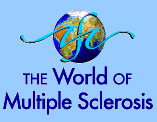 |
 |
. |
Cannabis : it is time to lift the
taboo MS Kontakt 2000; (2):8-9 With
its famous leaf in the form of a hand with seven fingers, Cannabis sativa is an
annual herb of the cannabinacee family originating from the
central Asia. Hemp grows in all latitudes and it can be cultivated
in most temperate and tropical regions of the whole world. Its
principal agent is the tetra-hydro-cannabinole D9 (THC),
especially available in the resin. The resin is to be found
specifically in the tip of flowers and the female plants are two
times richer in THC than the male ones. The most concentrated
product is the oil of hashish which contains 70% of the THC. The resin
(hashish) can contain 25% of THC whereas in marijuana (also called
grass), the dried leaves and tips of flowers of the plant, contain
between 2 and 25%, depending where the plant has grown. THC may
have mood elevating, stimulating, muscle-relaxant, anti-epileptic,
and antalginetic effects; it may also relieve nausea, stimulate
the appetite, relieve bronchospasm and reduce blood pressure. THC
is one of the 60 aromatic hydrocarbons of hemp called cannabinoids
and it is probably responsible for the majority of the
pharmacological effects. In order to produce their effect in man,
there has to be specific receptor in the human body capable of
reacting to the cannabinoids (two receptors have been identified
CB1 and CB2). Cannabis
is usually smoked with toxic results equal to the cigarette
smoking (carcinogenic, destruction of mucus in the bronchi,
diminution of the antibacterial activity of macrophages). Oral
administration diminishes these harmful effects but does not seem
to be fully trusted due to the different individual variations of
absorbing of the gastro-intestinal tract. More secure ways of preparation and
administration are being examined. Cannabis and MS Many studies, even when they are few and criticised for the level of their methodology, show the favourable effects on spasticity. The
following table summarises these results:
A study published on 2 March 2000 in ‘Nature’ confirms the effect of four cannabinoids on spasticity and trembling in an experimental form of MS in mice. Similar by-products could be developed for human use. Debate For a healthy debate one should not mix the therapeutic use of cannabis by MS patients and its common use for the leisure purposes. From
the medical point of view there is sufficient amount of given information to
motivate further
studies to examine
positive effects of oral cannabis on spasticity in MS. A similar
study on 660 MS patients in Great Britain has just begun and it
looks to me a good start to begin to favourably introduce cannabis amongst the multitude
of available drugs. Dr Renй Metz, Luxembourg
(Reproduced with kind permission) NB.
The Cannabinoids in Multiple Sclerosis Study is being conducted by
Dr John Zajicek of the University of Plymouth, UK. Information
about this trial can be found
18 August 2000 | ||||||||||||||||||||||||||||||||
 | ||||||||||||||||||||||||||||||||||